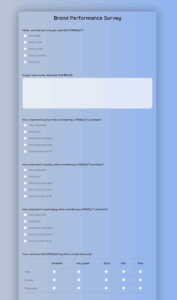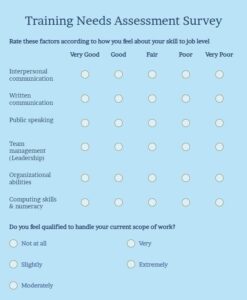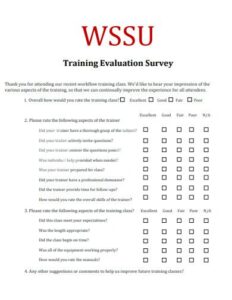Ever wondered why some training programs hit the mark perfectly while others seem to miss it entirely, leaving employees feeling uninspired and management scratching their heads? The truth is, effective training isn’t just about delivering content; it’s about delivering the *right* content to the *right* people at the *right* time. Without truly understanding what skills your team needs or what challenges they face, even the most well-intentioned efforts can fall flat.
This is where a systematic approach comes into play, ensuring your training initiatives are not just an expense, but a valuable investment that truly drives performance and growth. By taking the time to pinpoint specific areas for development, you can create programs that resonate, engage, and genuinely elevate your workforce.
What is a Training Needs Analysis (TNA) and Why Does it Matter?
A Training Needs Analysis, often simply called a TNA, is a systematic process to identify the gap between the current skills, knowledge, and abilities of an organization’s employees and the skills, knowledge, and abilities required to achieve organizational goals. Think of it as a diagnostic tool for your workforce’s capabilities. It’s not just about finding what’s missing; it’s about understanding what’s needed to propel your team forward, ensuring they have the tools to meet present and future demands.
The importance of conducting a TNA cannot be overstated. Without a clear understanding of actual needs, organizations risk wasting significant resources on irrelevant or ineffective training programs. Imagine investing heavily in a leadership workshop when your team actually struggles with basic software proficiency. A TNA prevents such missteps by providing data-driven insights, ensuring every training dollar is spent wisely on initiatives that will yield a tangible return on investment, both in terms of employee performance and overall business objectives.
Beyond avoiding wasted resources, a robust TNA directly contributes to employee development and morale. When training is tailored to individual and team needs, employees feel valued and supported in their professional growth. This can lead to increased job satisfaction, higher engagement levels, and reduced turnover. People are more likely to commit to a company that invests in their future and helps them acquire new skills, making them more confident and competent in their roles.
Ultimately, a well-executed Training Needs Analysis aligns your human capital with your strategic business goals. It helps identify critical skill gaps that could hinder innovation, productivity, or competitiveness. By proactively addressing these gaps through targeted training, organizations can build a more agile, skilled, and resilient workforce capable of adapting to market changes, adopting new technologies, and maintaining a competitive edge. It’s about building capacity for sustained success.
Key Components of a Comprehensive TNA
- Organizational Analysis: Understanding the strategic goals, mission, and current performance of the organization to identify broad areas where training might be needed.
- Job/Task Analysis: Detailed examination of job roles and specific tasks to determine the skills, knowledge, and attitudes required for successful performance.
- Individual Analysis: Assessing the current skills and performance of individual employees to identify specific gaps.
- Performance Discrepancies: Pinpointing differences between actual and desired performance levels.
- Learning Objectives: Clearly defining what employees should be able to do after training.
- Preferred Learning Styles/Formats: Understanding how employees learn best (e.g., online, in-person, hands-on).
Crafting Your Own Effective Training Needs Analysis Survey Template
Developing your own effective training needs analysis survey template is a crucial step in gathering the insights you need to build impactful training programs. It’s not just about asking questions; it’s about asking the *right* questions in a way that encourages honest and thorough responses. Begin by clearly defining the objectives of your survey. What specific outcomes are you hoping to achieve? Are you looking to identify software proficiency gaps, leadership development needs, or compliance knowledge deficits? Having a clear focus will help you tailor your questions appropriately.
When designing your survey questions, consider a mix of question types to gather both quantitative and qualitative data. Rating scales (e.g., 1-5 for proficiency levels) are great for quick, comparable data, while open-ended questions provide rich, detailed feedback that can uncover underlying issues or innovative suggestions. For example, instead of just “Do you need training on X?”, ask “On a scale of 1-5, how confident are you in performing X task?” followed by “What specific challenges do you face when performing X task?” This approach provides a more comprehensive picture.
Once your training needs analysis survey template is ready, strategic distribution is key. Consider using online survey tools for ease of distribution, data collection, and analysis. Ensure the survey is accessible and user-friendly on various devices. Emphasize the anonymity of responses to encourage candid feedback; employees are more likely to be honest if they feel their answers won’t be held against them. Communicate the purpose of the survey clearly and explain how the results will be used to improve their professional development and the organization as a whole.
Finally, the real work begins after the data is collected. Analyzing the responses from your training needs analysis survey template involves looking for patterns, identifying recurring themes, and quantifying the most pressing needs. Don’t just look at the numbers; delve into the qualitative comments to understand the “why” behind the ratings. This analysis should then directly inform the design of your training initiatives, ensuring they are targeted, relevant, and directly address the identified skill gaps and development opportunities. This iterative process is what turns raw data into actionable strategies.
- Keep it Concise: Respect your employees’ time. A lengthy survey might lead to incomplete or rushed responses.
- Use Clear, Unambiguous Language: Avoid jargon or complex sentences that could be misinterpreted.
- Pilot Test Your Survey: Before widely distributing, test it with a small group to catch any confusing questions or technical glitches.
- Ensure Anonymity (if appropriate): Reassure participants that their individual responses will be confidential.
- Communicate the Follow-up: Let employees know how their feedback will be used and what training initiatives will be implemented as a result.
Investing time in creating and utilizing a robust survey tool for identifying training needs is a testament to an organization’s commitment to its people and its future. It moves beyond guesswork, empowering you to make informed decisions that maximize the impact of every learning opportunity.
By continuously assessing and responding to the evolving needs of your workforce, you foster a culture of lifelong learning and adaptation. This proactive approach not only equips your employees with the skills they need to excel today but also prepares your entire organization to thrive in tomorrow’s ever-changing landscape.



